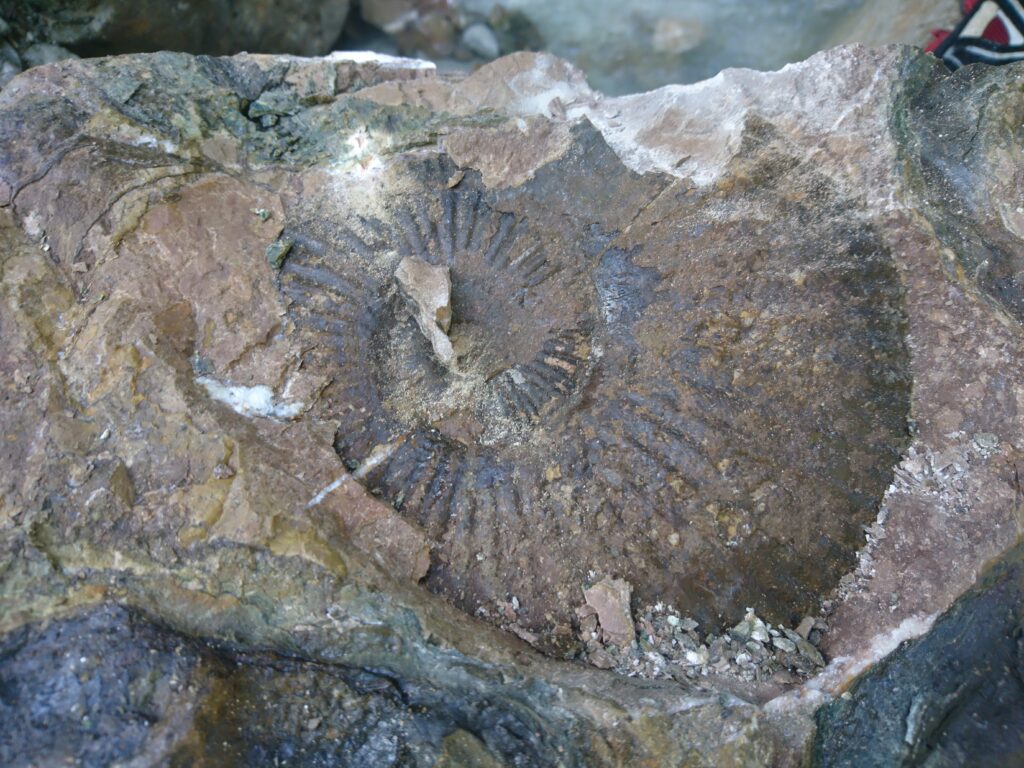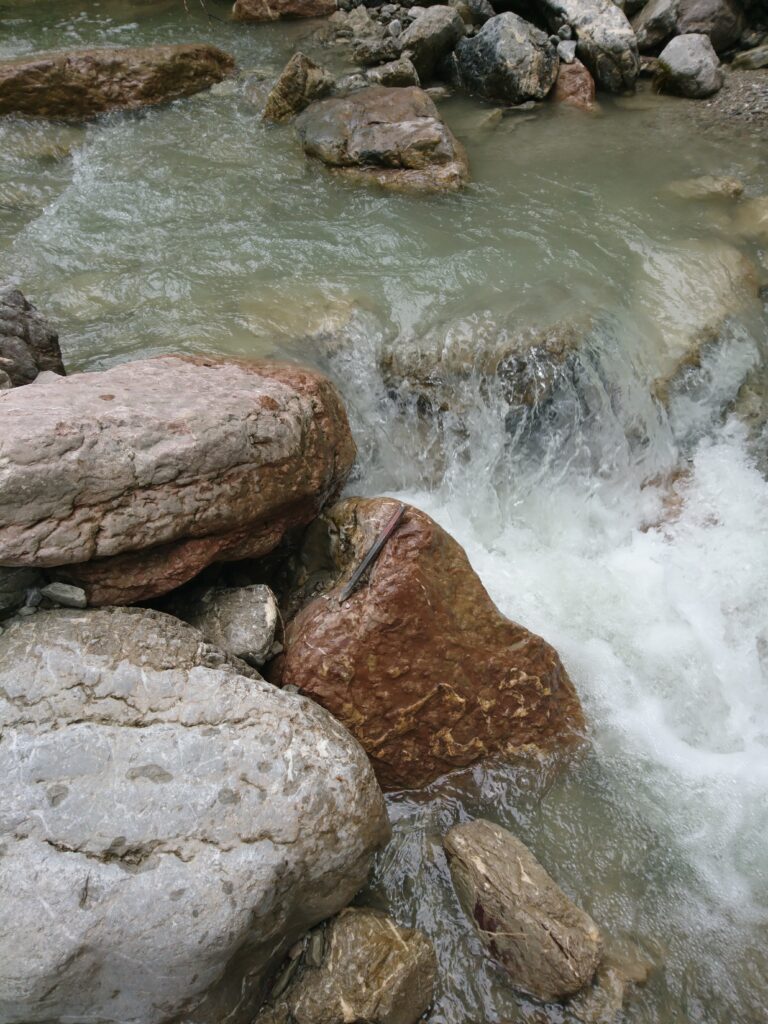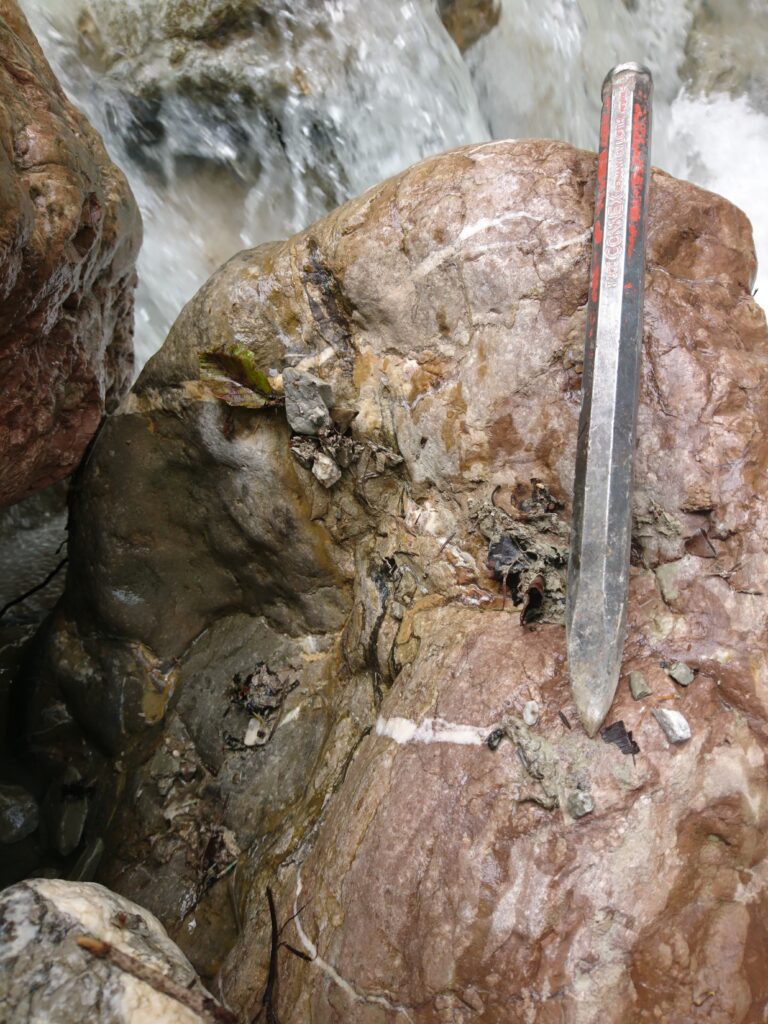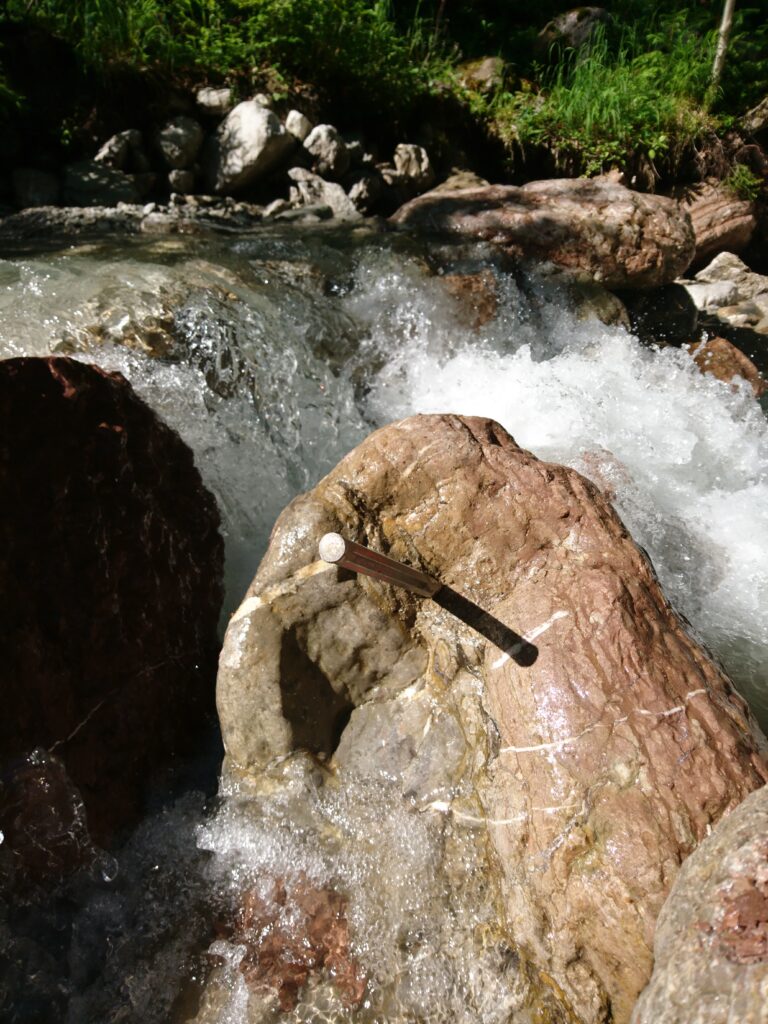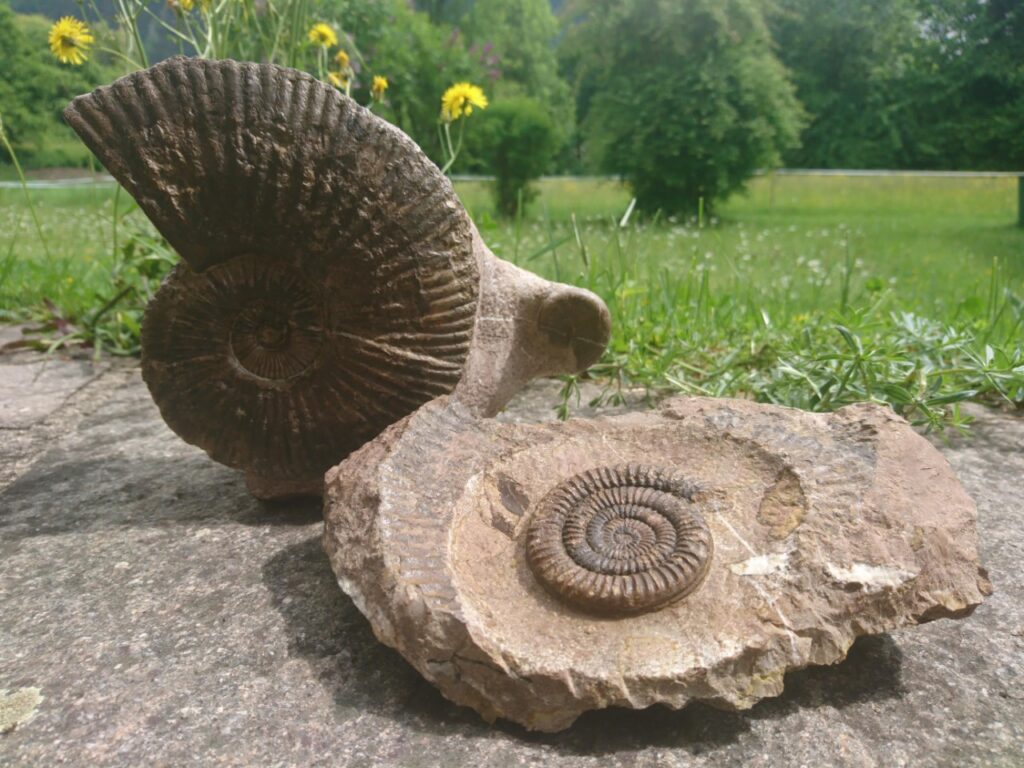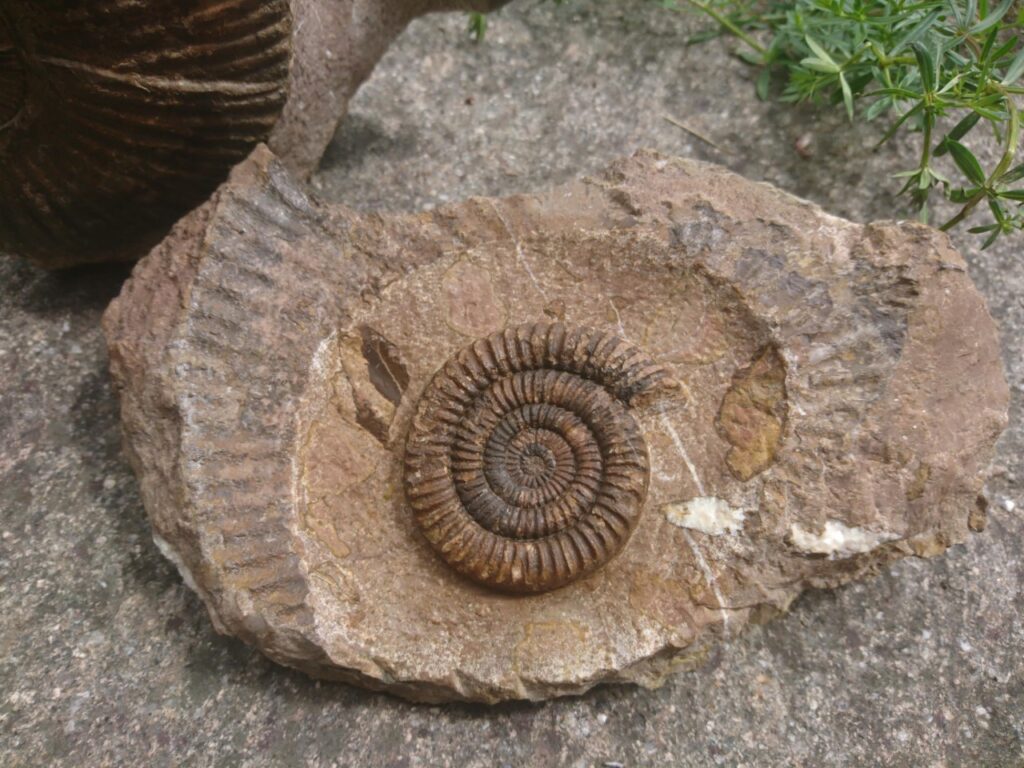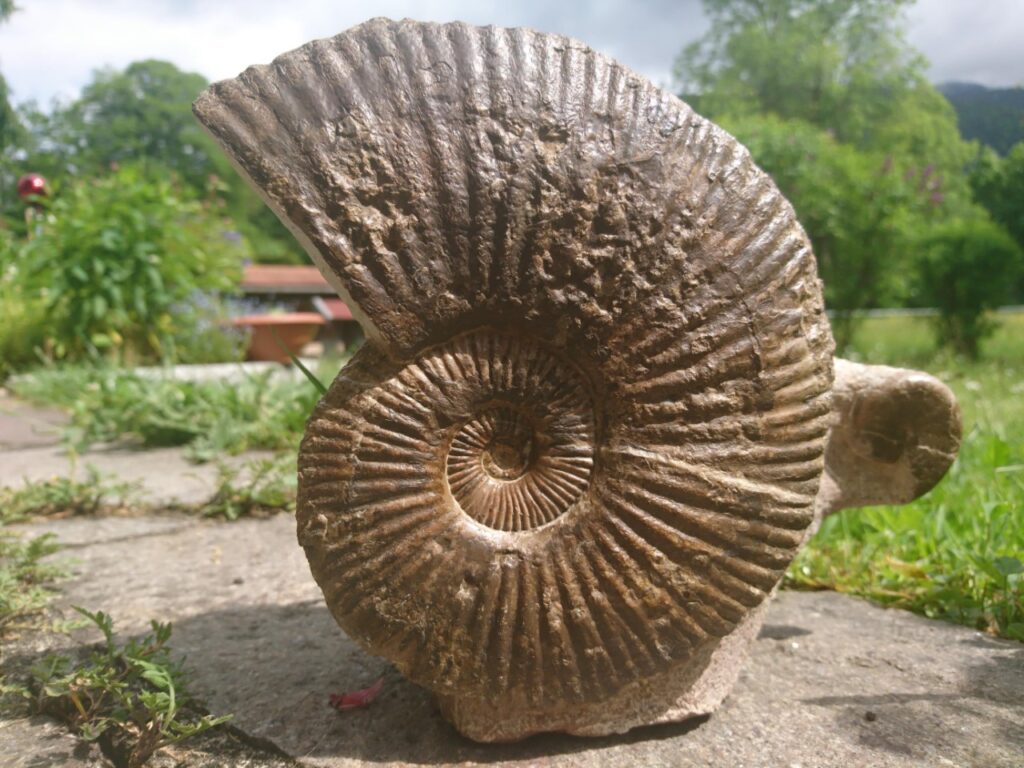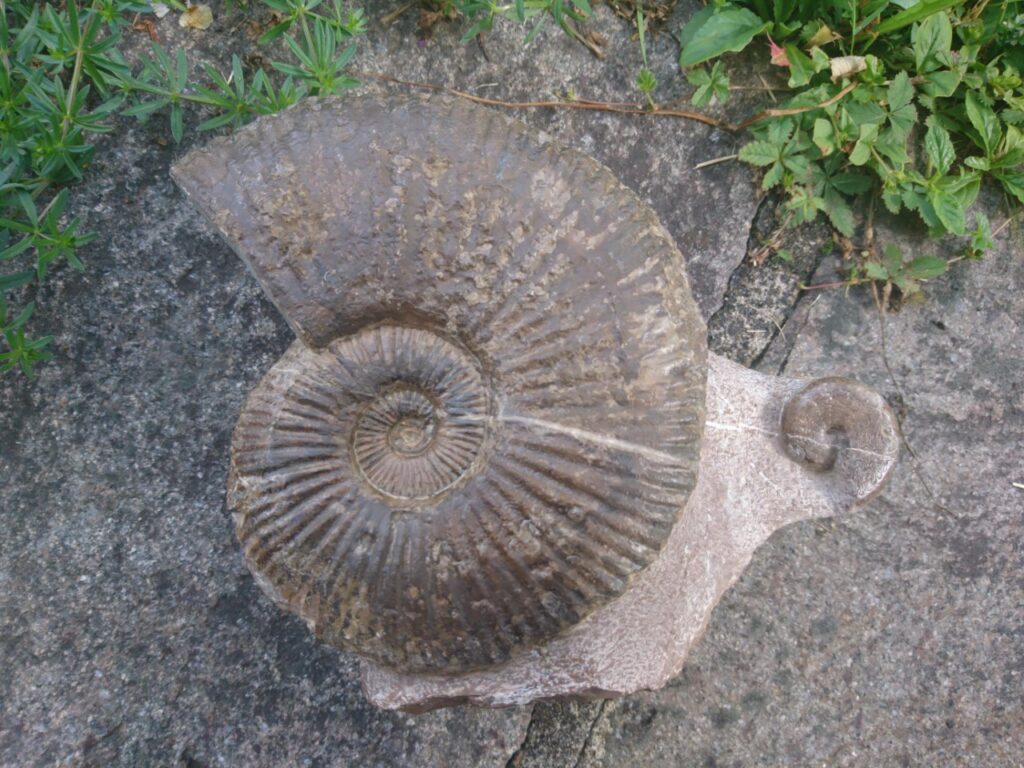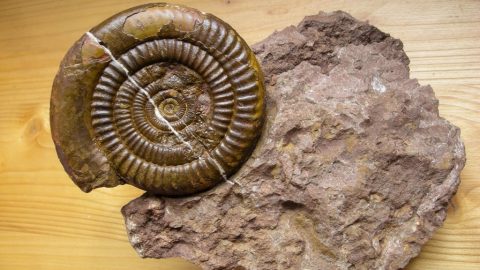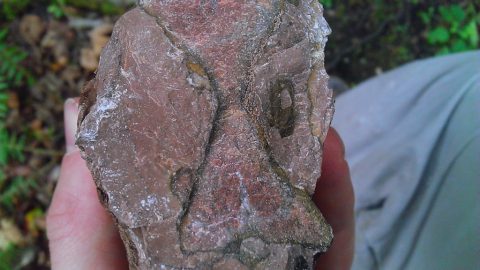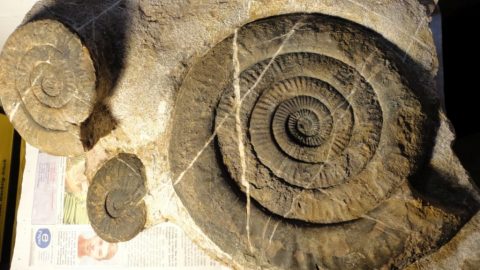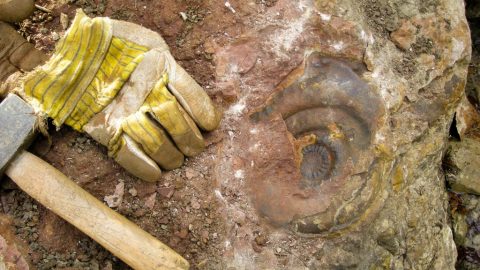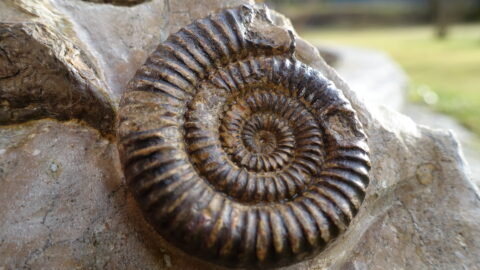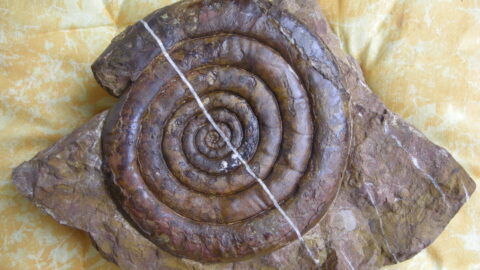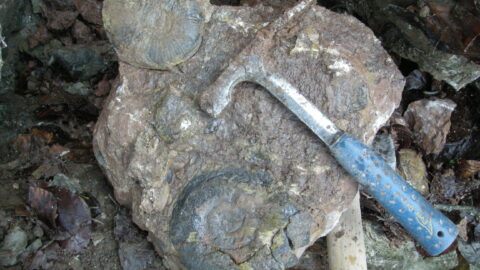Nachdem ich die 2019er Saison mit einer ungewollten und schmerzhaften Reizung meines rechten Ellenbogens vorzeitig beenden musste, war ich 2020 nach erfolgreicher Genesung natürlich sehr gespannt, ob noch weitere Funde an der im Vorjahr zuletzt besuchten und eigentlich seit Jahren abgegrasten Fundstelle möglich sind. Somit ging es an einem sonnigen Sommertag wieder auf ins Karwendelgebirge. Da ich an diesem Tag recht früh los bin und somit dem Ausflugsverkehr weitestgehend aus dem Weg gehen konnte, war ich nach ca. 35 Minuten mit dem Auto am Zielort angekommen.
Wie auch im vergangenen Jahr waren erstmal keine weiteren Funde zu machen. Erst ab der Stelle, an der ich im Vorjahr meine Saison gezwungener Maßen beendet hatte, war es mir erneut möglich zwei größere, sowie einen kleineren Brocken aufzufinden. Seltsamerweise lagen alle Blöcke wieder sehr nah beieinander – warum das so ist, konnte ich bisweilen noch nicht herausfinden. So viele Blöcke konnte ich in fünf Jahren zusammen nicht finden und hier liegen sie alle in einem sehr kleinen Radius beisammen?! Eventuell verlaufen die anstehenden Schichtflächen recht nah unsichtbar im Bachbett?!
Den ersten der beiden größeren Brocken habe ich dann, nachdem ich ihn entsprechend heraushebeln konnte, aufgearbeitet (Bilder fehlen hierzu leider). Außer Querschnitten und verdrückten Ammoniten war auf den ersten Blick nichts zu finden. Ich hatte mich aber trotzdem dazu entschlossen, dass ich alles großflächig mitnehme. In diesem Zuge konnte ich auch direkt meine neue Krax austesten – in dieser konnte ich sämtliche Platten und Teile des aufgearbeiteten Blocks unterbringen … das Aufheben gestaltete sich jedoch als sehr mühselig, da mein bisweilen getragenes Maximalgewicht durch diese Befüllung weit in den Schatten gestellt wurde (ich vermute, dass es über 60 kg waren). Das Teil direkt vom Boden auf den Rücken zu bringen war mir nicht möglich, daher wuchtete ich die befüllt Krax auf einen Stein, welcher etwa auf Oberschenkelhöhe lag. Dadurch hat es dann auch geklappt … puh, die ersten Schritte waren dezent gesagt sehr herausfordernd und nach ca. 20 Metern und der Erkenntnis, dass ich es so niemals aus dem Bachbett schaffen würde, war das Vorhaben auch schon wieder beendet … also zweimal gehen. Gesagt, getan. Schlussendlich waren die Mühen vergeblich, da der gesamte Block leer bzw. unbrauchbar war :D.
Der zweite große Block steckt bis heute noch im Bachbett, da er sich schlicht nicht spalten ließ … trotz bereits großer investierter Mühen. Vermutlich reicht er sehr tief ins Bachbett. Ich habe zwar das umliegende Gestein nach und nach abgetragen, aber am Ende ließen sich leider nur Teile abspalten – der Block ließ sich auch bisweilen nicht heraushebeln. Ich hoffe, dass der Block immer noch offen liegt und ich mit der Bearbeitung baldmöglichst fortfahren kann.
Der kleinste Brocken war dann endlich mal ein Treffer … direkt nach den ersten Schlägen löste sich der Deckel zu einem für diese Fundstelle verhältnismäßig großen Ammoniten (Angulaticeras trapezoidale (SOWERBY) mit ca. 18 cm Durchmesser). Größere, relativ gut erhaltene Exemplare sind hier sehr rar gesät. Leider habe ich die Mündung des Ammoniten voll mit dem Meißel erwischt und dadurch Kleinsteile, welche sich in keiner Weise mehr kleben lassen würden, produziert.
Im Negativ des großen Ammoniten war direkt ein weiterer Ammonit (Vermiceras (Gyrophioceras) praespiratissimus (WÄHNER)) aufliegend. Ich habe lediglich die untere Schichtung so gut wie möglich abgespalten und dann alles großzügig eingepackt.
Während der Präparation kam noch ein kleiner Geyeroceras cylindricum (SOWERBY) ans Tageslicht.
After I had to end my 2019 season prematurely with an unintentional and painful irritation of my right elbow (tennis elbow), I was very curious if further finds are possible at the site I had last visited the previous year and which had actually been grazed for years. So on a sunny summer day, I set off again to the Karwendel Mountains. As I left quite early that day and could thus avoid the excursion traffic as much as possible, I arrived at my destination after about 35 minutes by car.
Like last year, there were no further finds possible at first. There, where I had ended my season last year I was able to find two larger boulders and a smaller one. Strangely, all the boulders were again very close to each other – why this is so, I could not find out yet. All in all I have not been able to find so many blocks in five years and here they are all within a very small radius to each other…?! Possibly, the layer run quite close invisibly in the stream bed?!
After I was able to lever out the first of the two larger chunks, I worked it up (unfortunately I have no pictures of this). Apart from cross-sections and displaced ammonites, there was nothing to be found at first glance. Nevertheless I decided to take all big plates with me without working them up. In the course of this I was able to test my new backpack – I was able to store all the plates and parts of this block in it … picking it up, however, turned out to be very laborious, as my maximum weight, which I had carried till then, was far eclipsed by this filling (I think it were more then 60 kg). It was not possible for me to bring the backpack directly up from the ground to my back, so I weighed the filled backpack onto a stone, which was at about thigh height. This made it possible … phew, the first steps were, to express it discreetly, very challenging and after about 20 metres I realized that I would never make it out of the stream bed like that, cause it’s a very steep slope … so I walked twice. In the end, the efforts were in vain, as the entire block was empty or unusable :D.
The second large block is still stuck in the creek bed today, because it simply could not be split … despite great efforts already invested. It probably reaches very deep into the stream bed. I removed the surrounding rock bit by bit, but in the end, unfortunately, only parts could be split off – the block could not be levered out at times either. I hope that the block still lies open and that I can continue with the work as soon as possible.
The smallest chunk was finally a hit … directly after the first hammer a relatively large ammonite for this locality (Angulaticeras trapezoidale (SOWERBY) with a diameter of about 18 cm) came to light. Larger, relatively well-preserved specimens are very rare here. Unfortunately, I hit the mouth of the ammonite full on with the chisel.
In the negative of the large ammonite another ammonite (Vermiceras (Gyrophioceras) praespiratissimus (WÄHNER)) was directly lying on top. I merely split off the lower stratification as best I could and then generously packed everything in.
During the preparation, another small Geyeroceras cylindricum (SOWERBY) came to light.


